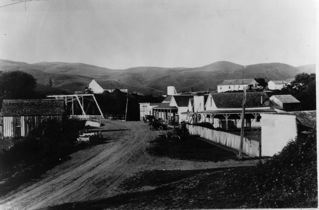In 1839, California Governor Alvarado granted four- square leagues of the Rancho San Gregorio to Antonino Buelnaâwho was busy âfighting Indians and foreigners in the San Joaquin.â?
Life seemed uncomplicated and no one bothered with the details of an official land survey. The Rancho San Gregorio was simply described as being bordered âon the west by the Arroyo de los Lobitos, on the north by the Sierra Grande, on the east by the land owned or claimed by Fran Gonzales and on the south by the Pacific Ocean.â?
Seven years later in 1846– after Mexico went to war with the United StatesâAntonino Buelna died, leaving a widow and a daughterâ¦but according to the document, Buelnaâs last will did not clearly specify how the estate was to be dispersed. That could have delayed legal transfer of the property but it did not stop hasty and questionable land transactions.
Buelnaâs relatives sold pieces of the valuable propertyâtheir names appear on the document.
In the interim, Antoninoâs widow, Concepcion, married Francisco Rodriquez. In 1851, Rodriquez failed to pay $118.12, the amount of state and county taxes due on the rancho. As a result of non-payment, the rancho went up for sale at a public auction. Strangely, the highest biddersâWilliam Baker of Massachusetts and his attorney J. L. Majorsâpicked up the rancho for a scant $118.12, the exact amount of taxes due.
Baker and Majors turned around and sold the land to Chilean businessman Francisco Casanueva for $10,000.
The yellowing document revealed yet another transaction, this time between Buelnaâs widow, Concepcion, and the Chilean businessman.
Confused? So am I.
Concepcion also applied for a patent on the rancho from the U.S. Land Commission Secretary in San Francisco.
Is it possible that the same land was sold twice? As to whatever actually happened and who paid whom, and for what reasons, the document paints a confusing picture.
â¦To be Continuedâ¦

